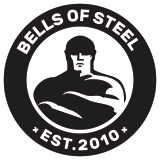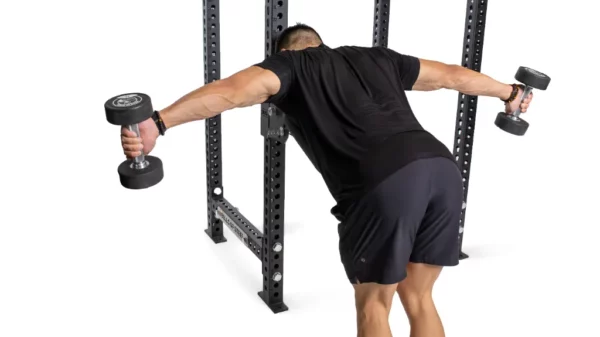There are many different types of workouts available, but two of the most popular and beneficial are HIIT and strength training. This article dives into the details and differences of HIIT vs Strength Training.
HIIT (High-Intensity Interval Training) has become one of the most popular ways for people to train. The benefits have long been known in the fitness industry, with HIIT workouts being challenging yet effective.
Strength training, on the other hand, places an overload on your muscles, forcing them to adapt to become stronger. Strength training is an effective way to change your body composition and achieve that ‘toned’ appearance. As we age, it enhances bone health, and because muscle burns more calories than fat, increasing your strength also means increasing your metabolism.
Confused about HIIT vs Strength Training and don’t know which is for you? Then check out the video and article below!
HIIT Overview: What does HIIT Mean?
HIIT exercises consist of short bursts of high-intensity exercise (working harder for certain intervals) that raise your heart rate to around 80% to 90% of your maximum heart rate, followed by longer periods of low-intensity exercise that brings your heart rate down.
HIIT pushes your body out of its comfort zone for five to eight minutes, depending on the workout, followed by a brief recovery period. It essentially takes your cardio workout to the next level.
Is HIIT Cardio or Strength Training?
HIIT workouts are cardio-focused methods. It’s an extremely effective workout that increases heart health, improves endurance, and burns fat more quickly than conventional cardio.
HIIT training offers many benefits on its own, but when paired with weights, it adds a whole new level to your exercise by allowing you to work your whole body in a short amount of time. Both during and after the workout, HIIT with weights helps burn fat and calories.
Does HIIT Build Muscle?
You certainly can! HIIT can be done with weights, and combining them is one of the most effective ways to maximize fat burn and improve heart health.
HIIT exercise offers several advantages on its own. When combined with weights, it provides your workout with a whole new level, allowing you to train your entire body in a short amount of time. HIIT with weights can help you lose weight, develop muscle, and enhance your heart health both during and after the workout. Metabolic Resistance Training is another name for this type of activity.
HIIT vs Strength Training for Weight Loss
Both HIIT and strength training has been proven excellent activities for healthy weight reduction. The good news is that you don’t have to pick between the two. You may switch them up a few times a week or mix them in compound workout sessions.
By incorporating weights into your HIIT workout, you can make your weight loss exercise routine even more efficient, which may enable you to reach your healthy weight goal even faster.
HIIT Pros and Cons
Pros
Saves Time
HIIT workouts are shorter and more efficient than typical cardio workouts. This is because the intensity levels are higher, meaning you’ll become tired faster. HIIT for half an hour or less is more than enough.
Fat Loss
HIIT workouts help your body burn calories even after you’ve finished. The quantity of oxygen necessary to restore the body’s metabolic balance called EPOC (Excess Post-Exercise Oxygen Consumption) will last longer when the intensity level is higher.
Convenience
You can get a HIIT session virtually anywhere. If you don’t have access to a gym – hotel rooms, parks, office space, even your living room – can all be incorporated into a high-intensity workout.
Variety
People who find regular exercise boring is often likely to succeed with HIIT. You can easily integrate kettlebells, dumbbells, bodyweight exercises and weight training into a high-intensity interval workout.
Cons
More Demanding on the Body
HIIT requires great effort and endurance. Performing exercises at a higher intensity with little rest between workouts can be a challenge and put much stress on your cardiovascular health.
Longer Recovery Time
It takes longer to recover from a HIIT workout due to the physical demands. It can be challenging to complete a HIIT workout every single day so you will have to find alternate workout options in between to give your body a break.
Not Suitable For Gainz
HIIT exercises burn a lot of calories and help you lose weight over time since they are mostly bodyweight and high intensity. HIIT workouts make it challenging to gain muscle mass unless you consume more calories than you burn during the day.
Can Be Risky
HIIT exercises frequently include complex exercise movements such as burpees and box jumps; doing these activities incorrectly can result in pulled muscles and other injuries. Intense exercises frequently put your body under a lot of stress, which can lead to physical and psychological effects over time.
HIIT vs Strength Training Summary
Ultimately, the most important thing is to find a workout you enjoy and stick to it. If HIIT challenges you and you do it correctly, that’s great! If not, there are plenty of equally healthy workouts to try.
Finding your ideal fitness program requires a balance of time, ability, and readiness. The key is to develop the habit of being consistent with your chosen workouts that are tailored to you and your fitness goal. We hope this has helped you decide between HIIT vs Strength Training!








